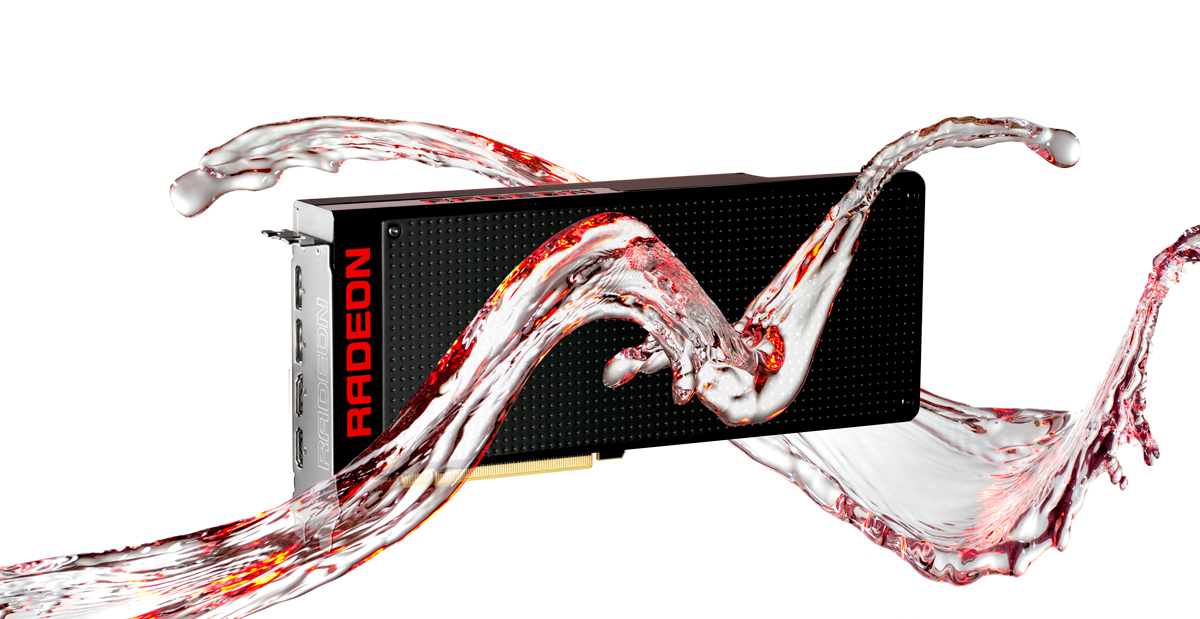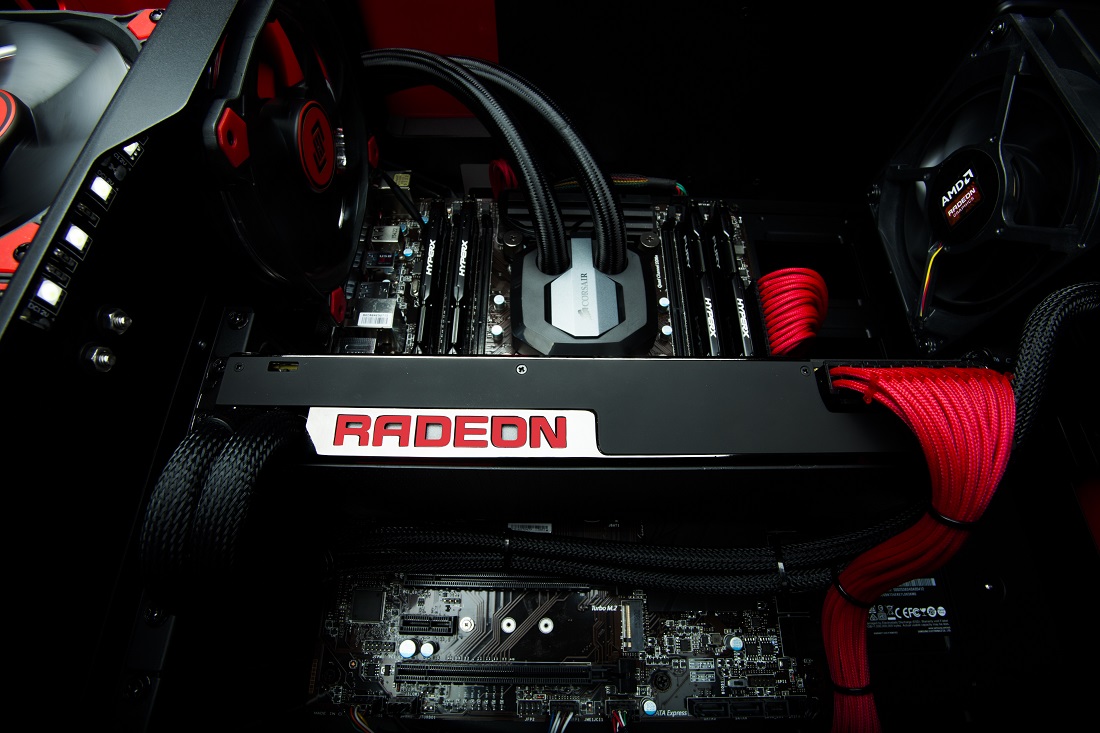As part of AMD's GDC 2016 keynote, the company has announced a brand new graphics card: the long-awaited Radeon Pro Duo with what appears to be two Fury-class Fiji GPUs on the one board.
The press release for the Radeon Pro Duo is a bit light on details, but everything does point to this card being the rumored "Radeon R9 Fury X2." Instead of slotting this card into the Fury line, AMD is positioning it as the "most powerful platform for virtual reality", allowing users to both create and consume VR content on this dual-GPU solution.
What AMD has revealed is that the Radeon Pro Duo is capable of 16 TFLOPS of compute performance, which is around double that of the Radeon R9 Nano. This graphics card is designed to be heavily used alongside AMD's LiquidVR technology, which helps optimize VR games and content for AMD's GPU architectures to ensure the best experience.

Judging by images of the graphics card, the Radeon Pro Duo uses a closed-loop liquid cooling solution similar to the R9 Fury X, but in a card that's much longer to accommodate both GPUs. You'll also notice the card requires three eight-pin PCIe power connectors, while the I/O shield includes two DisplayPorts and two HDMI ports.
The Radeon Pro Duo is also the first product in AMD's new 'VR Ready Creator' line, and it's a key piece of hardware in Crytek's new VR First initiative that aims to bring VR development on CryEngine to colleges and universities through dedicated VR labs. AMD is a major partner in Crytek's VR First program, and any new labs will be equipped with Radeon Pro Duos.
If you're thinking about buying the Radeon Pro Duo, it won't be cheap: AMD has listed a price of $1,499 for this graphics card when it becomes available in Q2 2016. This is the very same price as the Radeon R9 295X2 from the previous generation, and it comes in at around $200 more than buying two standalone Radeon R9 Fury X cards and running them in Crossfire.

As for AMD's other VR initiatives, the company has announced the "VR Ready Premium" designation that's designed to make it easier for consumers to pick a graphics card that is capable of running VR games. The label will apply to all "certified" Radeon R9 290-class GPUs and higher, as well as any systems that are built using these cards, such as HP's Envy Phoenix.
The "VR Ready Creator" designation, which only applies to the Radeon Pro Duo at this stage, is meant to designate "unprecedented performance and industry-leading innovation" to assist with the development of VR content along with regular VR consumption.
We're still waiting on more information about the Radeon Pro Duo, so we'll update this post as AMD's GDC keynote gets underway.
Also today: AMD shows off next-generation Polaris 10 GPU, architecture roadmap at GDC 2016
